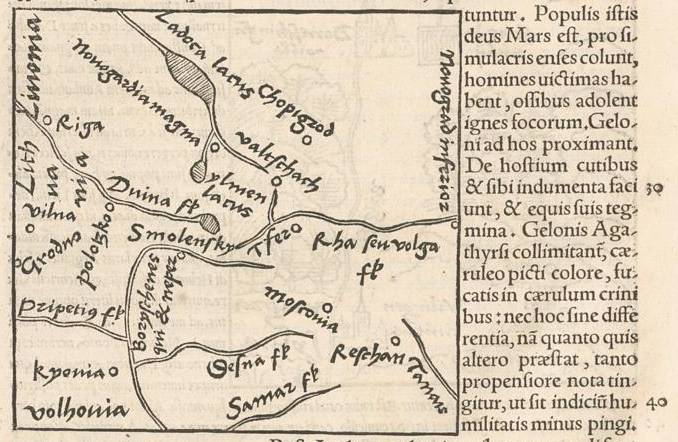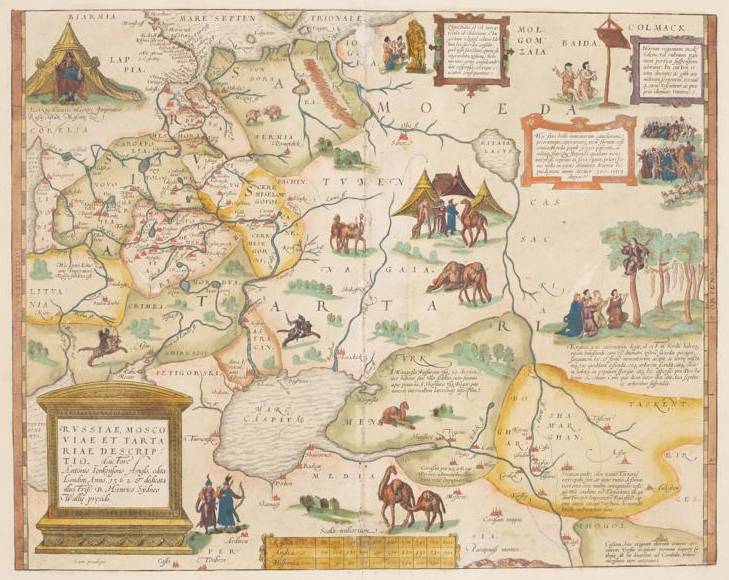The transformation of the geographical world view resulting from encounters with Muscovy
Geographical knowledge in the Renaissance remained rooted in ancient perceptions.
For example, popular belief was that the region that we recognize today as Russia was formerly a place of earthly paradise that existed beyond Sarmatia and the Riphean and Hyperborean mountains.
Between the Arctic Ocean and the Sea of Azov people of the ancient world believed there was only an isthmus, which was also intersected by the Tanaïs (Don) River. This fluvial border appeared to separate what was in effect one entire Eurasian land mass into a European and Asian continent.
Maciej z Miechowa and Sigismund von Herberstein revised this geographical world view with their essays.
Henceforth, it was no longer possible for Europe, and subsequently also Russia, to separate themselves from "wild Asia" using geographical criteria. Since the Enlightenment, the benchmark of so-called "civilization" assumed this task.


